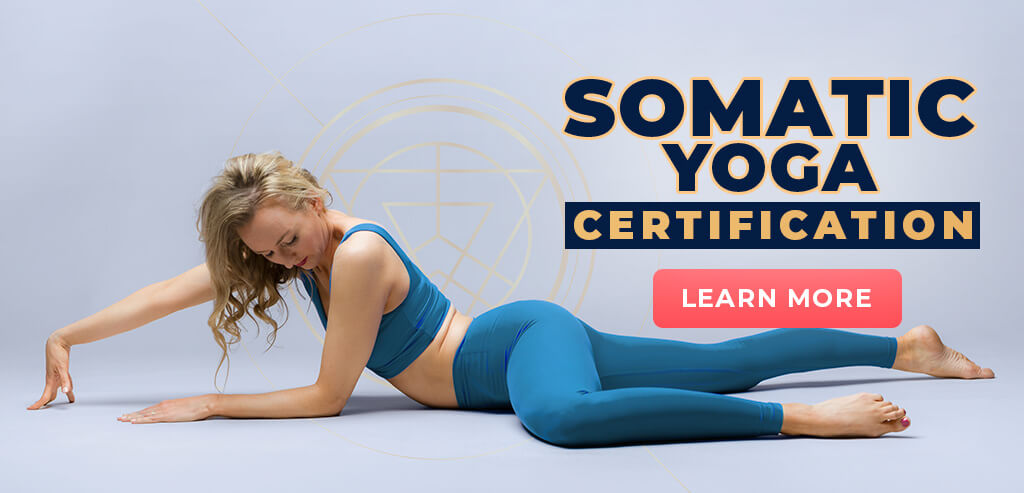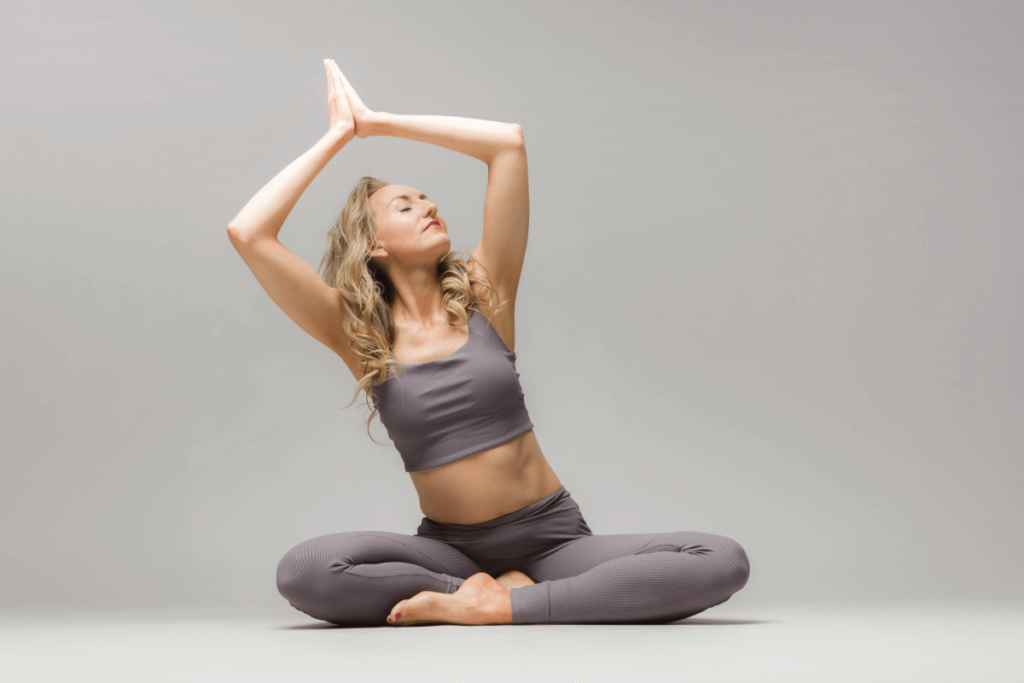
Let’s be real—life can be a lot sometimes.
If you’ve been feeling wired, tired, snappy, or just plain overwhelmed, you’re not alone.
Stress has a sneaky way of piling up in the body, leaving us stuck in survival mode without even realizing it.
The culprit? Often, it’s cortisol—your body’s main stress hormone.
But here’s the good news: you don’t have to power through or push harder to feel better.
In fact, the opposite might be true.
Somatic yoga for cortisol detox offers a gentle, body-based approach to help your nervous system unwind, release stored tension, and support natural cortisol detox—so you can finally exhale and come back to yourself.
So, what exactly is cortisol, and how does somatic yoga help? Let’s dive in.
What Is Cortisol?
Cortisol is a hormone produced by your adrenal glands that helps regulate your body’s stress response, blood sugar levels, metabolism, and inflammation.
It’s often called the “stress hormone” because it’s released in higher amounts when you’re feeling anxious, overwhelmed, or under pressure.
Chronic stress and chronic pain usually lead to excess cortisol. Managing cortisol levels can help you feel lighter as you develop and improve new ways to cope with and reduce stress.
It’s important to remember that cortisol isn’t bad—it’s a messenger from your body and your nervous system, letting you know something needs attention. Somatic exercises, like progressive muscle relaxation, can help you tune into and decipher what the message is.
The problem arises when cortisol levels stay elevated for too long, leaving you in a constant state of fight-or-flight.
Somatic yoga and somatic exercises are an effective tool to feel and process stress in real time, so cortisol can do its job and then, ultimately lower cortisol levels to normal—restoring balance, presence, and connection in your body, mind, and spirit.
So, how do you know if your cortisol levels are high? There are a few telltale signs…
How To Identify High Cortisol Levels
High cortisol doesn’t always announce itself with a big, dramatic entrance.
More often, it shows up subtly—through physical tension, chronic stress, irritability, physical sensations, emotional reactivity, or energy crashes that feel “off” but hard to explain.
Because cortisol touches nearly every system in your body, imbalances can show up in a variety of physical manifestations, from sleep issues to mood swings to stubborn belly fat to less body awareness. The key is learning to recognize the signals your body is sending before burnout hits.
Common signs and symptoms of high cortisol include:
- Chronic stress and feeling like you can’t relax
- Trouble falling or staying asleep
- Feeling tired but wired, especially at night
- Weight gain around the belly or midsection, and increased belly fat
- Increased anxiety, irritability, or mood swings
- Brain fog or difficulty concentrating
- Frequent headaches
- Digestive issues (like bloating, constipation, or IBS)
- Sugar or salt cravings, even in an otherwise healthy diet
- Low libido
- Irregular or missed periods
- Increased muscle tension or pain
- A tendency to get sick more often (weakened immune system)
These symptoms aren’t just random—they’re your body’s way of waving a flag and saying, “Hey, I need a reset.”
That’s where somatic yoga comes in: not just to treat the symptoms, but to help you shift the root cause.
Take my feminine energy quiz to get a recommended practice for balancing YOUR feminine energy 👇
How Somatic Yoga Reduces Cortisol
Somatic yoga works by activating the parasympathetic nervous system—the “rest and digest” branch that counterbalances the fight-or-flight response triggered by high cortisol levels. Through slow, mindful movement, breath awareness, and gentle body scans, somatic yoga signals to the brain that it’s safe to relax. This shift downregulates the hypothalamic-pituitary-adrenal (HPA) axis, which is responsible for releasing cortisol during times of stress.
By creating a felt sense of safety in the body, somatic yoga helps interrupt chronic stress patterns stored in the nervous system. It allows the body to complete stress cycles that may have been left unresolved, releasing tension from the muscles and fascia, and gradually lowering circulating cortisol levels. Over time, this practice retrains the body to respond to life with more regulation, resilience, and ease.
Benefits Of Somatic Yoga On Cortisol
Lowering cortisol through somatic yoga isn’t just about feeling calmer in the moment—it has powerful ripple effects on your overall health and well-being. Research shows that mind-body practices like somatic movement and breath-based yoga can significantly reduce cortisol levels and improve markers of stress, sleep, and immune function (Streeter et al., 2012; Pascoe et al., 2017). With consistent practice, you may start to notice the benefits of somatic yoga that extend far beyond the mat:
- Deeper, more restful sleep as your nervous system shifts out of survival mode
- Improved digestion and reduced bloating due to increased vagal tone and parasympathetic activation
- Greater emotional resilience and fewer mood swings as cortisol and adrenaline stabilize
- Reduced muscle tension and chronic pain through gentle release of stored stress in the fascia
- Enhanced focus and mental clarity as brain fog lifts and cognitive function improves
- Balanced hormones and more regular menstrual cycles from reduced HPA axis overactivation
- Stronger immunity and fewer colds or illnesses as cortisol-induced suppression decreases
These are the kinds of shifts that help you not just manage stress, but truly transform your relationship with it—from the inside out.
Awaken Your Feminine Energy with my Somatic Self Healing Masterclass (usually $67) FREE👇

FREE Feminine Form Embodied Yoga Masterclass (usually $67) Unleashing Pleasure + Intuitive Movement on the Mat

Practicing Somatic Yoga as a Cortisol Detox
To support your body in releasing excess cortisol and resetting your stress response, somatic yoga is most effective when practiced consistently, gently, and with deep attunement to your inner experience. Below are a few key ways to practice somatic yoga specifically for cortisol detox. These techniques aren’t about pushing or performing—they’re about creating safety in your body and allowing stored stress to melt away over time. Try weaving one or more of these into your daily or weekly rhythm:
Focus on Slow, Intentional Movement
Move slowly enough to feel. Somatic yoga emphasizes small, gentle movements that invite awareness, not effort. Slow motion allows your nervous system to track sensations in real time, sending a signal to the brain that you’re safe. This helps deactivate the stress response and supports natural cortisol regulation.
Practice Diaphragmatic Breathing
Deep belly breathing is one of the fastest ways to calm the nervous system. Try inhaling through your nose for a count of 4, and exhaling through your mouth for a count of 6. This activates the vagus nerve and shifts you into parasympathetic mode—exactly where cortisol starts to drop.
Include Grounding Postures
Grounding poses like constructive rest, supported child’s pose, or legs-up-the-wall help anchor your body to the present moment. These shapes gently reduce physical tension and support your body in releasing long-held stress patterns.

Try Somatic Body Scans
Bringing awareness to different parts of your body, one at a time, can help reconnect your mind and body after stress-induced disconnection. A body scan invites presence and gives your system permission to slow down, which aids in resetting cortisol levels.
Move with Curiosity, Not Judgment
The goal is to explore your internal experience—not to “fix” or force anything. Approaching your practice with curiosity allows you to notice where you’re holding tension, soften around it, and begin to unwind chronic stress patterns without pushing.
Suggested Poses for Cortisol Detox
- Constructive Rest Pose (Supine with knees bent) – Releases lower back tension and invites the body into deep rest.
- Somatic Cat-Cow (Pelvic tilts + spinal waves) – Helps unwind spinal tension and connect breath to movement gently.
- Supported Child’s Pose – Grounds the body and soothes the adrenal glands located just above the kidneys.
- Legs-Up-the-Wall (Viparita Karani) – Enhances circulation, calms the mind, and supports parasympathetic activation.
- Reclined Butterfly (Supta Baddha Konasana) – Opens the hips and heart while promoting a sense of emotional ease.
- Seated Side Bends – Gently mobilizes the spine and ribs, supporting deeper, more regulated breathing.
- Somatic Twist (supine or seated) – Relieves spinal tension and encourages lymphatic drainage and detox.
- Diaphragmatic Breathing in Savasana – Anchors the nervous system in rest-and-digest mode to support cortisol release.
Take my feminine energy quiz to get a recommended practice for balancing YOUR feminine energy 👇
Final Thoughts
If you’re ready to explore the deeper layers of your being, somatic yoga offers a doorway to not only physical health but also emotional freedom and self-discovery.

FREE Embodied Yoga Workshop (usually $67) Somatic Techniques & Cord Cutting Ritual

If you want to go even deeper, I invite you to join my Somatic Yoga Training Certification. This comprehensive training will equip you with practical tools and insights to enhance your practice and effectively guide others on their somatic yoga journey.
YOU MIGHT ALSO LIKE
- Somatic Yoga for Cortisol Detox: A Gentle Path to Stress Relief and Nervous System Healing
- Gentle Somatic Yoga: Heal Chronic Pain, Release Trauma, and Reclaim Your Bod
- Somatic Meditation: A Body-Based Approach to Healing Stress, Anxiety, and Trauma
- Advanced Pelvic Floor Breathing: A Somatic Approach to Healing
- Somatic Yoga For Yoga Teachers: Everything You Need to Know in 10 Steps
- How Somatic Shaking Can Release Tension and Reset Your Nervous System
- Discover Somatic Pilates: Enhance Your Body Awareness and Flexibility
- Kundalini for Feminine Energy: Ignite Your Creative Power and Passion
- 6 Effective Somatic Yoga for Neck and Shoulders
- How to Teach Somatic Yoga: A Practical Guide for Instructors
- The Best Somatic Exercises for Grief: Find Healing Through Movement
- The Best Somatic Exercises for Anger Management and Emotional Release
- How to Teach Somatic Yoga to Beginners
- Best Somatic Yoga Poses for Emotional Release and Healing
- The Rich History of Somatic Yoga: From Origins to Modern Practices










